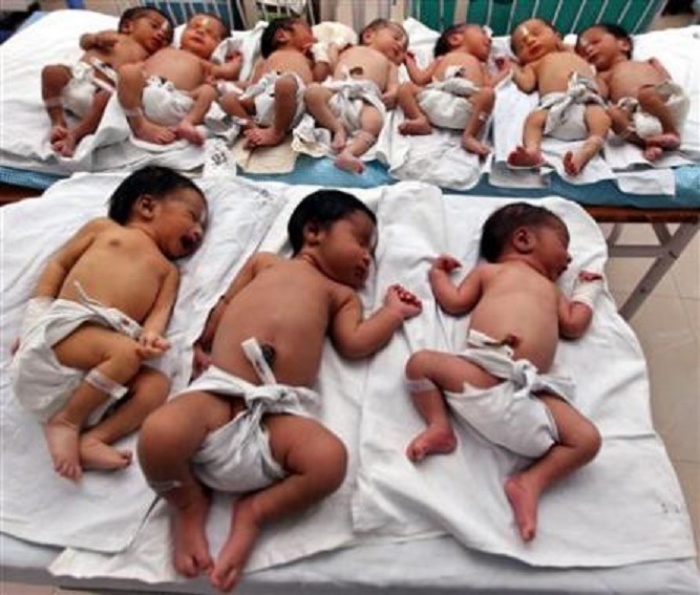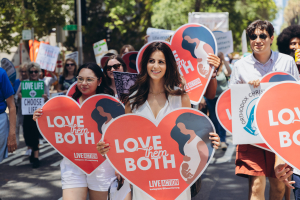UK Scientists Will Be Ready to Create Three-Person Babies 'in Two Years;' FDA Considering Clinical Trials of Technique in US

Scientists in the UK announced Tuesday that they will be ready to create babies using genetic material from three people in two years, once the government makes it legal, while the U.S. Food and Drug Administration is deliberating whether to allow clinical trials to create these genetically modified babies.
In techniques commonly referred to as mitochondrial replacement, scientists would use eggs from two women and sperm from one man to treat deadly mitochondrial diseases, according to a BBC report.
Mitochondria, explains scientists with the UK's Human Fertilization and Embryology Authority, "are small structures present in cells that produce much of the energy required by the cell. They contain a small amount of DNA that is inherited exclusively from the mother through the mitochondria present in her eggs. Mutations in this mitochondrial DNA (mtDNA) can cause a range of rare but serious diseases, which can be fatal."
About 1,000 to 4,000 babies are born in the U.S. each year with mitochondrial disease.
Replacing the defective mitochondria from one woman's eggs carrying the mutated mitochondria with healthy ones from another woman's eggs would make it possible for women carrying the defective gene to have healthy babies with genetic material from three different people. These genetic changes would also be transferred to future offspring.
The techniques have been the subject of scientific and ethical debate for several years.
In their third scientific review of the safety and efficacy of mitochondrial replacement techniques, the UK's Human Fertilization and Embryology Authority recommended that they be considered "not unsafe" for use on a "specific and defined group of patients."
Professor Robin Lovell-Badge of the UK's Medical Research Council and a member of the scientific panel, said that once a series of final tests recommended are complete, scientists can start creating three-person babies in two years.
"I think that [two years] is not a bad estimation. The other sorts of experiments that we thought were necessary, again it will take about two years to complete all of those," Lovell-Badge told the BBC.
Professor Andy Greenfield, chair of the scientific review panel, cautioned, however, that safety is "not a straightforward issue."
"Are these techniques safe in humans? We won't know that until it's actually done in humans. Until a healthy baby is born we cannot say 100 percent that these techniques are safe, if you think back to when IVF was a new technology, all of these questions were asked before IVF," he explained.
The FDA's Cellular, Tissue and Gene Therapies Advisory Committee held a hearing Feb 25-26 to consider whether to approve mitochondrial replacement techniques in humans.
On Wednesday, an FDA representative told The Christian Post that a decision has not yet been made.
If the FDA approves, trials in the creation of three-person babies can begin.
Not everyone, however, is focused on the potential good that could come from these genetically modified babies.
In an op-ed in The New York Times in February, Marcy Darnovsky, executive director of the Center for Genetics and Society, warned that scientists could be opening Pandora's box with genetically modified babies.
"This is a dangerous step. These techniques would change every cell in the bodies of children born as a result of their use, and these alterations would be passed down to future generations," said Darnovsky.
She noted that researchers at Oregon Health and Science University produced five macaque monkeys using a mitochondrial replacement technique and they all appear healthy for now. Four of them are adults using one of these techniques and all five appear healthy.
She pointed out, however, that the work of those same researchers seeking to replicate the technique using fertilized human eggs have not been as promising.
"More than half of the human zygotes — single cells formed by the merging of an egg and sperm — had abnormalities not observed in the fertilized eggs of the monkeys. 'It looks like human oocytes are more sensitive,'" the lead researcher, Shoukhrat Mitalipov, a reproductive biologist, told Nature.
"The FDA. advisory panel says that its meeting will consider only scientific aspects of mitochondrial manipulation and that any "ethical and social policy issues" are outside its scope. But those are precisely the issues that we must address. Simply being able to do something doesn't mean we should do it," she ended.




























